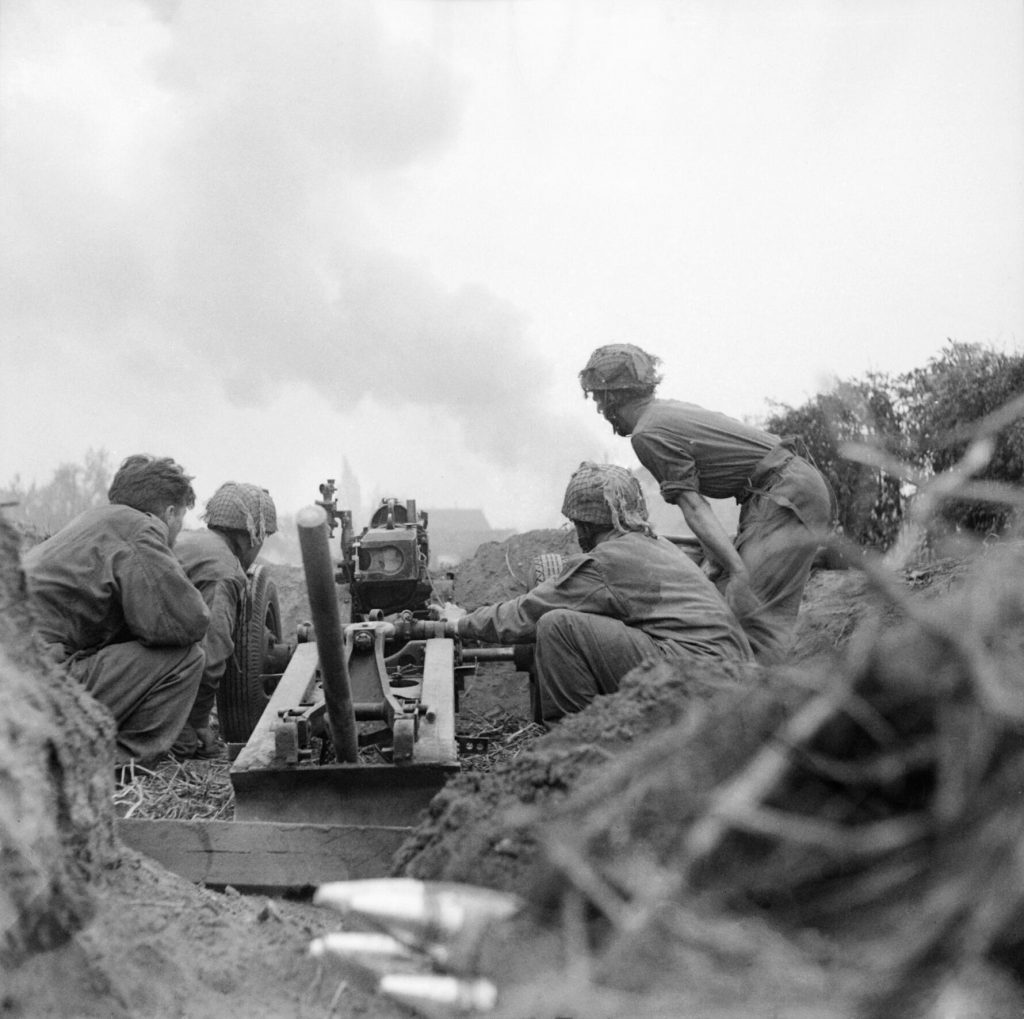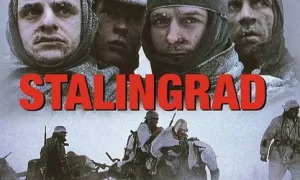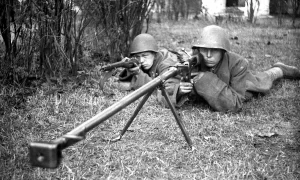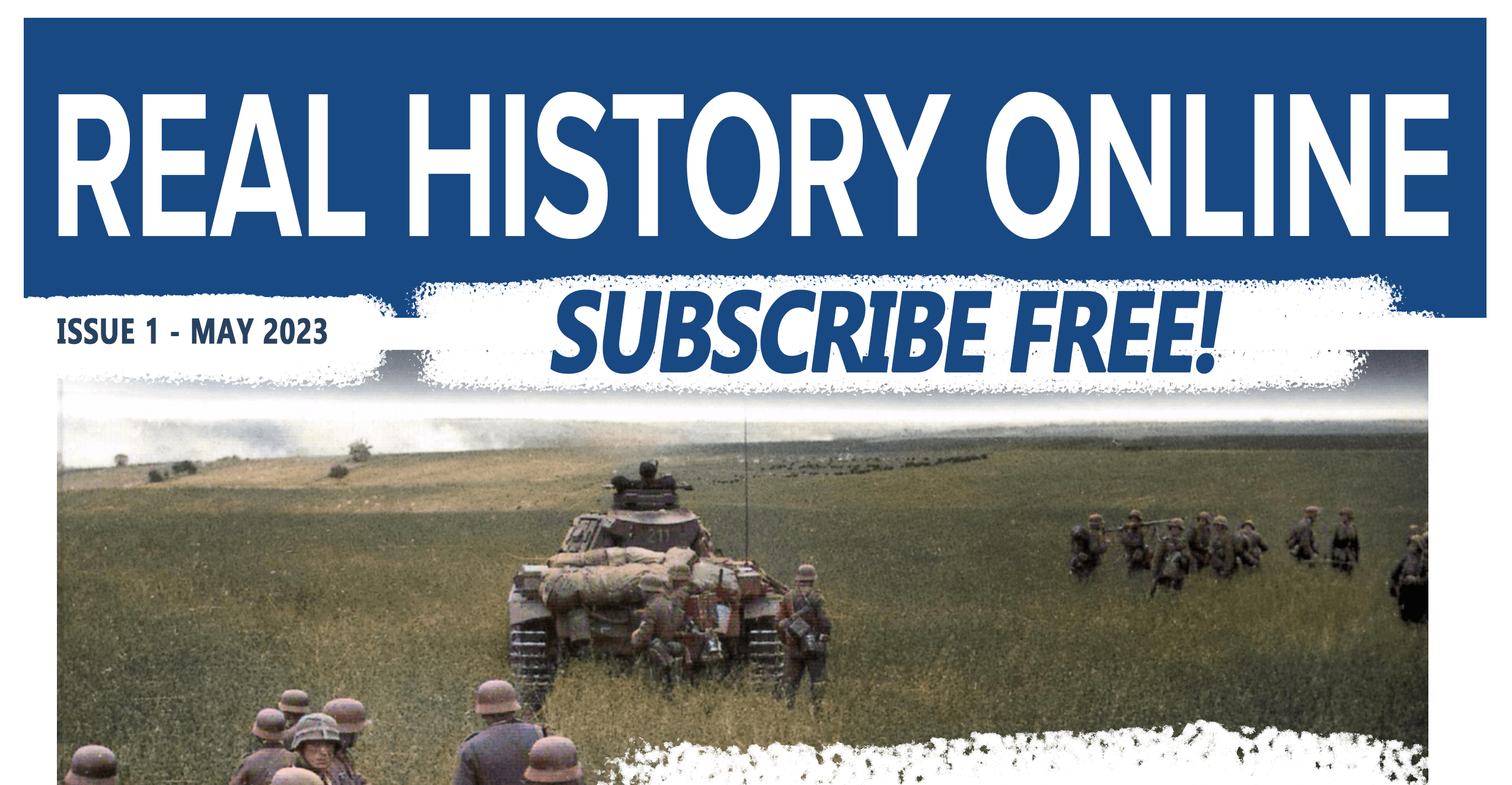Operation Market Garden – an allied military operation initiated on September 17 to September 26 1944 in the Netherlands. During the operation, one of the largest airborne landings in history was carried out.

Before The Battle
After the defeat in the Normandy operation and Operation Cobra, the remnants of the German troops by the end of August retreated to the German border, to the fortifications of the Siegfried Line. As a result of the rapid advance in France and Belgium, the Allied communications were stretched out. On September 4, 1944, their advance was suspended.
The reason for the delay in the offensive was supply problems, since by that time they had the only port – Cherbourg. The railways were destroyed by the bombing, and everything needed for the army had to be transported by trucks from Normandy. Another reason was the terrain: the territory of the Netherlands, cut by numerous canals and rivers, made the offensive dependent on bridges, thereby simplifying the task for the German defense.
Montgomery was planning an attack on Wesel and Arnhem, using airborne forces to capture the bridges over the Rhine and even confided in the Chief of General Staff that he expected to enter Berlin in two to three weeks. Eisenhower, who was in Chartres, once again changed his mind. In a personal meeting, Montgomery argued to Eisenhower, using largely the same arguments as Patton and Bradley, that a single and powerful rapier-like attack towards Berlin would accelerate the collapse of German will, similar to that which occurred in 1918. This could be achieved using the allied 1st airborne army to capture the 100-km corridor from the Belgian border to the Lower Rhine at Arnhem. Even if Germany did not surrender, the Allies would flank the Siegfried Line and seize a bridgehead on the other side of the Rhine.
An additional argument was received that same morning in a secret telegram from the Chief of the British General Staff. The long-awaited bombardment of London with V-2 ballistic missiles began 48 hours ago. The Germans launched them from mobile installations in the suburbs of The Hague, and the only hope for a cessation of further shelling, besides the destruction of this Dutch city by bombers, was an offensive operation, as a result of which the 21st Army Group would cut the Netherlands off from Germany.
The operation was codenamed “Market Garden”: “Market” meant the landing component, and “Garden” – the ground component. However, the combination of these words in direct order in English means simply “vegetable garden” – thus the name reflected the desire of the allied command to achieve coordination and synergy of actions of two separate elements within the framework of a common task. Both commanders agreed that the operation should begin on Sunday 17 September. If successful, it was supposed to end the war with Germany by Christmas (end of December) 1944 with the capture of Berlin.
Operation plan


The plan of the operation belonged to the British Field Marshal B. Montgomery and was approved by Eisenhower. The Allied plan was to bypass the Siegfried Line by advancing north into the Arnhem region, capturing bridges over the Meuse, Waal, Lower Rhine, and turning into the industrial regions of Germany. The seizure of Dutch ports was supposed to solve the supply problem. In total, the advancing mechanized units had to overcome about a hundred kilometers from the town of Neerpelt to Arnhem, while crossing at least nine water obstacles. For convenience, the entire corridor was divided into three sectors, which received names from the names of large cities located in these sectors -Eindhoven, Nijmegen and Arnhem. Each of them was assigned to one of the parachute divisions.
The German side collected the retreating units, brought in reinforcements and lined up defenses along the Rhine in order to prevent the Allies from entering German territory.
Operation “Market”
In Operation Market, the paratroopers had to land on a narrow “carpet path” in the southeastern part of the Netherlands on the Eindhoven-Arnhem section. Removal of drop sites from the front line – 60-90 km. The main goal is to capture bridges over the rivers Dommel, Aa, Meuse, Wilhelmina Canal, Meuse-Waal Canal and further to the Rhine.
Operation Garden
The main forces of the 30th corps were supposed to advance on Eindhoven, Nijmegen and Arnhem to connect with the landing force.
Operation progress


On September 17, 1,344 transporters, 491 Dakota landing gliders (with the corresponding number of towers), 1113 bombers and 1240 fighters took off from different take-off fields to fulfill the Market Garden plan. The second wave, which started the next morning, consisted of 1,360 Dakotas and 1203 gliders with tugs. In total, 34 876 soldiers and officers, 568 artillery pieces, 1926 vehicles were to be landed behind enemy lines. During the entire operation, 5227 tons of cargo were delivered to the location of the three airborne divisions. For the Germans, the appearance of the allied paratroopers in the sky was a real surprise.
By 15:00, all the landing forces were grouped and began to perform their tasks.
The main body of the British landed in an area distant from their main target – the bridge over the Rhine at Arnhem – more than 10 kilometers. The time spent on gathering troops and marching to the target of attack deprived the British of the main benefit of the airborne operation – the moment of surprise. Half an hour later, the British paratroopers had their first serious problems. The radio stations give unexplained failures – communication has been lost with almost all units. On the way to Arnhem, the vanguard of the division was ambushed – a reconnaissance squadron moving in jeeps… The offensive of two other battalions was also halted. Only the paratroopers of the 2nd Battalion, led by Lieutenant Colonel John Frost, managed to achieve the main goal – the road bridge in Arnhem and begin preparations for the defense. At this key point, several 57-mm anti-tank guns were immediately installed, shooting through the bridge and the approaches to it on the opposite bank of the Rhine.
The second echelon of the landing, which landed at noon on September 18, could not improve the situation. At night, German formations were able to pull up additional forces in the Arnhem area. This forced the paratroopers to go on the defensive, they finally lost the initiative. On September 19, the main forces of the division, leaving a weak screen blocked at the Arnhem bridge, retreated to the bridgehead in the Oosterbeek area on the northern bank of the river. Here, divided into two parts, not having a sufficient number of anti-tank weapons, at the cost of heroic efforts, the paratroopers managed to repel a massive attack of the 9th SS Panzer Division.
The Americans were doing much better. Despite the counter-fire, the paratroopers of the 82nd Division, manages to capture the bridge over the Meuse near Grave, and in the evening under the control switches in the bridge Nyumene… But due to the delay in the disembarkation zone, the main goal was not fulfilled for cleaning the adjacent territories – the bridge in Nijmegen was not taken. In the area of Eindhoven of the 101st Division, unopposed, took control of the bridge in St. Udenrode, and entered Vegel….
At this time, after receiving information about the successful outcome of the landing, the commander of the 30th British Army Corps, Lieutenant General Brian Horrocks, whose forces outnumbered the enemy in infantry twice (in tanks and aviation, the numerical advantage was absolute), began an offensive from the Neerpelt bridgehead. At 14:00, four hundred heavy guns began shelling enemy positions, and half an hour later the convoy, numbering 20,000 vehicles, moved northeast. The offensive of the British troops (a guards armored and two infantry divisions) developed along a single highway, since the terrain to the right and left of it was impassable for tanks. Horrocks did not expect serious resistance from the Germans. In practice, things turned out differently. The destruction of one tank in front entailed the formation of a traffic jam and the stop of the entire column. Each time it took a lot of time and effort to clear the road and continue the march,so on September 17 the British covered only 6-8 kilometers, and the vanguard of the corps approached the southern outskirts of Eindhoven only by the end of the next day. The slowdown in the advancement of the ground forces put the paratroopers under attack.
The position of the units of the 1st British Airborne Division as a whole continued to deteriorate. On September 19, during the day, the British lost all radio communications and dispersed their forces, leaving some units without leadership and air support. In Arnhem, isolated groups of paratroopers were forced into violent street fighting. General Urquhart spent 36 hours inactive, lying under fire in one of the city’s low lofts. The actions of the British cannot be assessed otherwise than as complete chaos.
At this time, the Allied ground forces established contact with the American paratroopers of the 82nd Division in the Nijmegen sector, crossing the previously captured bridges over the Seid-Willemswart Canal and the Meuse River, thus passing only halfway to the Rhine. Together, the road bridge in Nijmegen was taken. The remaining German units withdrew to the north and hastily began to establish a line of defense in the area of the town of Elst. In the first hours after the capture of the bridge at Nijmegen, the 17-kilometer section between Nijmegen and Arnhem was practically unprotected. The road to British tanks was blocked by only one anti-tank position, arranged outside the town of Lent. However, the offensive impulse of the guards grenadiers had already been exhausted. On the morning of September 20, British paratroopers, by order of the division commander, begin to move to Osterbeck,to create a defense area around the town. Thus, attempts to break through to the encircled battalion of Frost, holding the southern part of the bridge in Arnhem, are stopped.
General Urquhart’s plan was simple: to control a strip of coast about 2.5 km in length, which could later be used as a springboard for the 30th corps. Thus, the main goal of the operation – the transfer of troops across the Rhine – will be achieved no matter what. But this was not destined to come true.
After seventy hours of heavy close combat, the surviving 120 men of the 2nd Battalion on the morning of September 21 were nevertheless driven off the Arnhem Bridge. While the commander of the German group, General Model, concentrated all efforts on eliminating the 1st Airborne Division, until the forces of the 30th Corps approached her, the British non-stop attacked its screens in the Nijmegen area in order to break through to their paratroopers leading battle at the crossing and take the same Oosterbeek bridgehead. To strengthen the units fighting in the vicinity of the city, on the same day, near Elst and Dril, a reserve was dropped – the 1st Polish parachute brigade. The weather allowed for the landing of about 1000 people.
On September 22, the German units stopped attacking the besieged head-on and proceeded to shelling the positions, which did not stop all morning. The sniper fire also increased. Individual attacks allowed the Germans to partially narrow the area of defense over the next three days, but the losses incurred did not match the results. Although the armored fist of the 30th corps got stuck near the town of Elst, the armored vehicles of the 2nd cavalry regiment found the roundabout path and met with the Polish paratroopers in Dril… At nightfall, the Poles attempted to cross the Rhine. All the ferry facilities were put into operation – several rubber boats, rubber belts, rafts built from scrap materials. The Germans discovered and fired at the makeshift crossing with machine guns and mortars. By Saturday morning, only 52 people had crossed over to the north shore.
September 22 was also a difficult day in the Eindhoven sector. Later, General Horrocks will call this day ” Black Friday.” Along the entire front, the Germans launched a series of counterattacks to find the most vulnerable spot in the Allied defenses.
Vegel was attacked first. The defending units of the 501st Regiment of the 101st Division were unable to stop the German offensive. The 44th Panzer Regiment from the 30th Corps, as well as part of the 506th Regiment of the same parachute division, was sent to the aid of the paratroopers. After many hours of fighting, the German counter-offensive was stopped, but the situation to the north-east remained difficult. The road from Eindhoven to Nijmegen, nicknamed “Hell’s Highway”, was blocked.
On Saturday, the Germans again tried to recapture Vegel, but were driven back. Nevertheless, part of the road was still under their control. To resume movement on the highway, General Horrocks recalled the 32nd Guards Brigade from Nijmegen with the task of attacking enemy units from the north and opening a corridor. Initially, this brigade was supposed to go to Dril and ensure the setting of floating bridges across the Rhine, but without even having time to concentrate forces to strike to the north, it was forced to return to the south again. The brigade returned to Uden at about 17:00 on 23 September. A joint attack from two directions allowed the corridor to be reopened.
During Saturday, September 23, the situation in the Arnhem sector remained practically unchanged. The forces of the parachutists were melting. However, they continued to fiercely repulse the German attacks. In the afternoon, planes with supplies from the 1st parachute division appeared in the sky. This was the last mass flight of transport aircraft. Having lost 8 aircraft, the pilots, however, did little to help the paratroopers. The bulk of the dropped cargo ended up with the Germans.
Despite significant losses on Saturday, on the morning of Sunday 24 September, the Germans made another attempt to cut the Hell highway, vital for the allies. Near the village of Erde, west of Vegel, German paratroopers entered the battle. With difficulty, this settlement was defended. To the south, near the town of Kuvering, at the junction of the 501st and 502nd parachute regiments, the corridor was again blocked. By evening, German troops went directly to the highway, burned a convoy of British trucks and completely stopped traffic on the highway. The allies again had to divert forces from the main direction of the strike in order to patch holes in the defense (but this was only done by September 27). Failures in this sector were one of the decisive factors in the fate of Operation Market Garden.
Nevertheless, after a week of bleeding both sides of the battle, the British command abandoned plans to hold the bridgehead at Oosterbeek. On September 25, Urquhart was ordered to leave his positions at night and retreat across the river to Nijmegen. The crossing of the Rhine was carried out in amphibious boats under cover of darkness.
Operation “Market Garden” ended on the morning of September 26, when, after eight days of heavy fighting, 2,400 exhausted soldiers – the remnants of the 1st Division – reached Nijmegen.

Outcomes
The main strategic goal of the operation – opening the way for the invasion of Germany through the north-west of the country – was not achieved. However, the operation ensured the advancement of the Allied ground forces a considerable distance deep into the territory of the Netherlands. The 101st and 82nd US Airborne Divisions consistently, by seizing bridges, ensured this advance, but the bridge in Arnhem, captured by British and Polish paratroopers, really turned out to be “too far” for the allies (according to unconfirmed reports, the phrase belongs to General Browning ). Arnhem remained in the hands of the German troops.
Due to the fact that the Dutch operation of September 1944 ended in an obvious strategic failure, Montgomery admitted in his post-war memoirs:
Berlin was lost to us when we failed to develop a good operational plan in August 1944 after the victory in Normandy.
This was due to both objective circumstances (skillful actions of the opposing side) and a number of mistakes and omissions made in planning the operation by the high command (intelligence data on the presence of German tank units in the landing area were ignored, secrecy was not set at the proper level – for which operational plans, including landing sites, could fall into the hands of the enemy), and technical services. So, the plans of the commander of the 1st Airborne Division of Great Britain, General Roy Urquart, were disrupted by the absence or inoperability at the landing site of the necessary communications and off-road vehicles with special weapons and equipment of the SAS type., which deprived the troops of maneuver and combat coordination – the main advantages of the airborne assault over the numerically and technically superior enemy forces. The landing zone of the British paratroopers was too far from the front line, and the advance of the mechanized units was too slow. Giving the command of the 1st Airborne Army the order to seize bridges and crossings on the road from the Belgian border to Arnhem, Montgomery promised: “Hold on for two days, and I will replace you with troops with the proper weapons.” In fact, the paratroopers held the northern end of the bridge across the Lower Rhine for four days, the bridgehead on the river bank for nine days, and the change never came.
However, there is another version, according to which a German spy is guilty of the failure of the Arnhem airborne operation. In 1954, the head of the Dutch counterintelligence mission at the headquarters of the Supreme Commander of the Allied Expeditionary Forces, O. Pinto, reported that the spy was a former soldier of the French Foreign Legion, Dutchman Christian Lindermans nicknamed “King Kong” (commander of one of the “internal armed forces” of the Dutch resistance, former agent of the Abwehr since 1943), invited by the Canadian command of the armed forces to assist in the preparation of the operation. Following this, Lindermans crossed the front line and on September 15, 1944 in Driebergen reported information about the landing of airborne troops to Colonel of the Abwehr Kizevetter.












